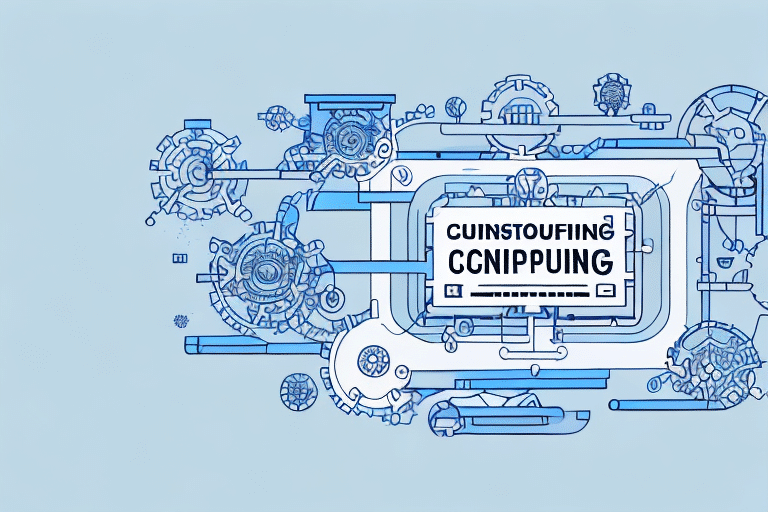Developing a Culture of Continuous Improvement in Shipping Operations
Shipping companies operate in a fast-paced and constantly evolving industry, where competition is fierce and margins are often tight. In this environment, the ability to constantly improve processes and maximize efficiency can make all the difference in the success of a logistics operation. This article explores the importance of continuous improvement in shipping operations and how to develop a culture of improvement in your organization, regardless of its size.
The Importance of Continuous Improvement in Shipping Operations
Continuous improvement is a disciplined approach to analyzing existing processes and seeking ways to optimize them. In shipping operations, small improvements in efficiency can lead to significant cost savings and increased productivity. According to a McKinsey report, companies that implement continuous improvement strategies can enhance their competitiveness and adaptability in changing market conditions.
Embracing a culture of continuous improvement enables companies to stay ahead of the curve and remain profitable in a challenging industry. Utilizing technology, such as Transportation Management Systems (TMS) and data analytics, can streamline processes, reduce errors, and provide real-time visibility into shipments.
Creating a Culture of Improvement in Shipping Operations
Developing a culture of continuous improvement requires a multi-faceted approach that involves all levels of the organization. Here are essential steps to foster a culture of improvement:
- Establish Clear Goals and KPIs: Align your goals with business objectives to measure progress effectively.
- Encourage Employee Feedback: Create a safe environment for employees to share ideas and concerns.
- Provide Training and Development: Enhance employees' skills and knowledge to drive improvement.
- Recognize and Reward Contributions: Acknowledge employees' efforts to motivate ongoing participation.
- Implement Tracking Systems: Monitor progress towards goals and adjust strategies as needed.
Regularly reviewing and analyzing shipping operations helps identify areas for improvement. Staying updated with industry trends and best practices ensures continuous innovation and optimization of processes, ultimately delivering higher levels of service to customers.
Implementing a Successful Continuous Improvement Program
A successful continuous improvement program can yield numerous benefits for shipping companies, including:
- Improved efficiency and productivity
- Reduced costs and increased profitability
- Enhanced customer satisfaction and retention
- Better employee engagement and retention
- Increased competitiveness and market share
To implement a continuous improvement program effectively, consider the following steps:
- Secure Management Buy-In: Engage senior leadership to support and fund the initiative.
- Identify and Prioritize Areas for Improvement: Conduct thorough analyses and gather frontline feedback.
- Develop an Action Plan: Outline the steps required to implement the improvement initiatives.
- Communicate the Plan: Ensure all employees and stakeholders are informed and aligned.
- Monitor and Evaluate: Regularly assess the program's effectiveness and make necessary adjustments.
Establishing clear goals and metrics is crucial for tracking progress. Involving employees at all levels fosters buy-in and ensures collective effort towards common objectives. Additionally, promoting a culture of continuous learning encourages ongoing contributions to improvement efforts.
Tools and Techniques for Enhancing Shipping Processes
Shipping companies can utilize various tools and techniques to analyze and improve their processes:
- Lean Six Sigma: Combines lean manufacturing and Six Sigma methodologies to reduce waste and improve quality.
- Value Stream Mapping: Visualizes the flow of materials and information to identify inefficiencies.
- Process Mapping: Details each step of a process to pinpoint areas for improvement.
- Root Cause Analysis: Identifies the underlying causes of problems to prevent recurrence.
- Kaizen Events: Short-term, focused efforts to implement specific improvements.
- Pareto Analysis: Identifies the most significant factors contributing to a problem.
- Quality Control Charts: Monitors process performance over time to ensure consistency.
Automation has also become a vital tool in shipping processes. Automated sorting systems, barcode scanning, and real-time tracking can reduce errors and enhance efficiency. Implementing Internet of Things (IoT) devices allows for real-time monitoring of shipments, helping to identify and address issues promptly.
Measuring the Success of Continuous Improvement Programs
Tracking Key Performance Indicators (KPIs) is essential for assessing the effectiveness of continuous improvement initiatives. Key KPIs for shipping companies include:
- Cycle Time: The total time from order placement to delivery.
- On-time Delivery: The percentage of shipments delivered on schedule.
- Cost per Shipment: The average cost incurred for each shipment.
- Customer Satisfaction: Metrics derived from customer feedback and surveys.
- Employee Turnover: The rate at which employees leave the organization.
- Inventory Accuracy: The precision of inventory records compared to actual stock.
Additionally, monitoring the number of defects or errors in the shipping process, such as incorrect orders or damaged goods, provides insights into areas needing improvement. Reducing the need for rework enhances efficiency and lowers associated costs.
Overcoming Challenges in Scaling Continuous Improvement Efforts
Scaling continuous improvement efforts in shipping operations presents several challenges. Common obstacles and strategies to overcome them include:
- Culture Change: Shift the organizational mindset by providing training and demonstrating the benefits of continuous improvement.
- Organizational Silos: Promote cross-departmental collaboration and communication to ensure cohesive efforts.
- Resistance to Change: Involve employees in the improvement process and address their concerns to mitigate resistance.
- Lack of Resources: Secure necessary support and funding from senior management to sustain improvement initiatives.
- Data and Analytics: Invest in data collection and analysis tools to inform decision-making and track progress.
Addressing these challenges is crucial for the successful scaling of continuous improvement programs, ensuring that shipping operations remain efficient and competitive.
The Role of Technology in Continuous Improvement
Technology plays a critical role in enabling continuous improvement in shipping operations. Key technological advancements include:
- Data Analytics: Advanced analytics tools help identify patterns and trends, facilitating informed decision-making.
- Process Automation: Automation streamlines operations, reduces errors, and enhances efficiency.
- Collaboration Tools: Cloud-based platforms enable effective communication and information sharing among teams.
- IoT Devices: Real-time tracking and monitoring of shipments improve visibility and prompt issue resolution.
- Customer Service Technologies: Chatbots and automated support systems enhance customer interactions and satisfaction.
Integrating these technologies fosters a more responsive and efficient shipping operation, driving continuous improvement and better customer service.
Case Studies: Successful Continuous Improvement in Shipping Companies
Several shipping companies have successfully implemented continuous improvement programs, yielding significant benefits:
- FedEx: Implemented "Quality Driven Management" to enhance service quality and reliability, resulting in reduced costs and increased customer satisfaction.
- Maersk: Launched "Continuous Improvement in Operations" to boost efficiency and cut costs, achieving a 10% reduction in operational expenses and a 15% decrease in vessel turnaround time.
- DHL: Adopted the "Optimize Now" program to improve efficiency and lower emissions, leading to a 16% reduction in CO2 emissions and a 24% decrease in fuel consumption.
These examples demonstrate the tangible benefits of committing to continuous improvement in shipping operations.
Conclusion
Developing a culture of continuous improvement is essential for shipping companies aiming to stay competitive in a dynamic and challenging industry. By setting clear goals, engaging employees at all levels, and leveraging the right tools and technologies, companies can achieve enhanced efficiency, reduced costs, and increased customer satisfaction. Embracing continuous improvement not only drives operational success but also ensures long-term sustainability and growth in the shipping sector.




















